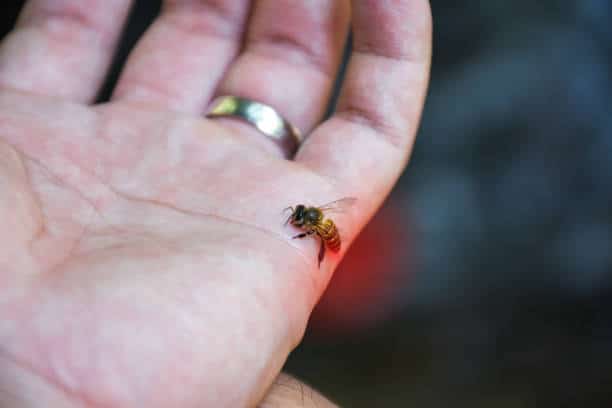The moment a bee sting strikes, it’s not just the immediate discomfort that bothers us, but the lingering question: “How long will this last?” Whether you’re a concerned parent or an outdoor enthusiast, this editorial aims to arm you with valuable insights into what happens after the initial pain and how long it generally takes for a bee sting to fully heal.
Understanding the Nature of a Bee Sting
When you’re stung by a bee, you’re not just grappling with the immediate stinging sensation but a series of symptoms that follow. Normally, the intense pain and burning sensation that accompanies a bee sting will last for about 1 to 2 hours before gradually diminishing. You may also notice the area turning red and swelling, symptoms that could persist for several days. Although uncommon, in certain situations, the swelling might even stick around for up to a week.

Identifying the Symptoms
Being well-acquainted with the symptoms of a bee sting can guide you through the healing process. Initially, you’re likely to feel a burning sensation at the site of the sting, coupled with visible swelling and redness. While the burning may subside after a couple of hours, the swelling can linger for up to three days. If you notice that the swelling is spreading to other areas like your face or neck, this could be a sign that you need medical attention.
Available Treatment Options
The first step after a bee sting is to remove the stinger and cleanse the area with soap and water. For immediate relief from swelling and discomfort, consider applying a cold compress or taking an over-the-counter antihistamine. For more severe symptoms, a topical steroid or antihistamine cream can offer relief. Persistent or worsening symptoms might require a visit to the healthcare provider, particularly if an allergic reaction is suspected.
When to Seek Professional Help
Most bee stings resolve on their own, causing minor discomfort and swelling that naturally subsides. But if you experience symptoms like difficulty breathing, dizziness, hives, or a rapid heart rate, medical intervention becomes crucial. Such symptoms could indicate an allergic reaction that can be severe and require prompt attention.
The Role of Allergy Medications
If you’re someone prone to allergic reactions from bee stings, having an EpiPen handy can be a lifesaver. It’s advisable to consult your healthcare provider about preventive allergy medications. These medications, mainly antihistamines, can help to mitigate symptoms such as inflammation and itching but are not a substitute for emergency treatment like an EpiPen in the case of a severe allergic reaction.
Long-Term Consequences of Bee Stings
While the vast majority of bee stings have short-lived symptoms, some may come with long-term effects. Allergic reactions can sometimes cause persistent swelling and itching that lasts for days or even weeks. Severe cases might lead to anaphylactic shock, which is life-threatening and demands immediate medical care.
Preventive Measures for Bee Stings
Taking simple precautions can minimize your chances of getting stung. Avoid areas with known bee activity and opt for protective clothing when venturing outdoors. In case you encounter a bee, remain calm and move away gently without making sudden movements or disturbing their habitat.
At-Home Treatments for Bee Stings
Minor bee stings often can be effectively managed at home. Cold compresses or ice packs work well for reducing swelling, and over-the-counter pain medication like ibuprofen can relieve discomfort. Lotions containing calamine or hydrocortisone are also helpful in reducing itching and inflammation. If the symptoms persist or worsen after 48 hours, seek medical help.
Home and Natural Remedies
Several home remedies can offer relief from the symptoms of a bee sting. A paste made from baking soda and water can alleviate pain and itching. Similarly, natural options like aloe vera gel, honey, and herbal compresses using plantain, chamomile, or lavender can be effective in reducing inflammation and providing comfort.
By understanding the nature, symptoms, and treatment options for bee stings, you can better manage the healing process. However, it’s crucial to be vigilant for signs of severe reactions and to seek professional medical care when warranted.

Editorial Staff
Our writers, editors, content managers, and SEO specialist. We all take part in crafting amazing articles. We spend hours ensuring that each article is based on facts, researched, and thorough. You'll never want to click the back button to look for more answers other than here!
